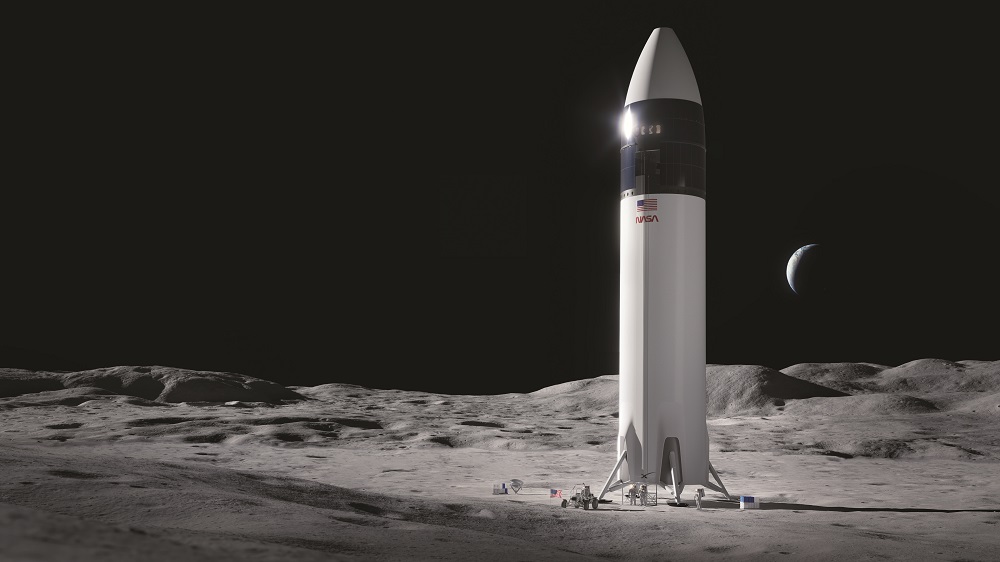WASHINGTON — The Government Accountability Office offered more details about its decision to reject protests filed by two companies of NASA’s Human Landing System (HLS) award to SpaceX.
The GAO released Aug. 10 a 76-page decision denying protests filed in April by Blue Origin and Dynetics of NASA’s decision to make a single HLS award, valued at $2.9 billion, to SpaceX. The GAO announced its decision July 30 but withheld the formal decision memo until a version suitable for public release, with redactions, was available.
The GAO rejected claims by the protesting companies that NASA erred by making a single award when it discussed its desire to make multiple awards. The “plain terms” of the solicitation, the GAO concluded, “unequivocally put the protesters on notice that NASA could make multiple awards, a single award, or no award at all.”
The GAO decision provides new details about the financial constraints NASA faced when assessing the HLS proposals. NASA received $850 million from Congress in fiscal year 2021 for the HLS program and identified an additional $96 million from other programs that could go to HLS. However, $389 million of that funding was already committed to the “base period” awards NASA made to Blue Origin, Dynetics and SpaceX in 2020, and $202 million reserved for internal and other costs for the program. That left $355 million available for the new HLS awards.
All three companies requested initial milestone payments more than that amount, although the exact numbers are redacted in the public GAO document. NASA requested SpaceX, the lowest bidder, revise its payment structure to address that. The document does not disclose the new value of that initial milestone payment, although government contracting records show NASA paid SpaceX $300 million on July 30, the day the GAO rejected the protests.
Blue Origin and Dynetics, the GAO concluded, “did not submit proposals priced in a manner that NASA could make multiple awards with the available funding for the HLS program.” While the questions about the importance of multiple competitors, the GAO added in its decision, “may merit further public debate, they do not establish that NASA has violated any applicable procurement law or regulation.”
The GAO also rejected claims by Blue Origin and Dynetics that their proposals were unfairly evaluated in comparison with SpaceX’s proposal. These range from Blue Origin’s criticism of how its lander’s communications system was assessed to the mass of Dynetics’s lander that “far exceeds” its allocation.
The GAO dismissed those claims, concluding that “the record adequately supports NASA’s evaluation of the protesters’ proposals and was consistent with applicable procurement law, regulation, and the terms” of the solicitation.
However, the GAO did agree with one claim that the protestors made about how NASA evaluated SpaceX’s proposal. SpaceX’s concept of operations for its Starship lunar lander requires 16 launches: one of the lander itself, 14 “tanker” Starships to fuel it and another whose purpose is redacted. The protestors argued that NASA erred in not requiring a flight readiness review (FRR) for each launch.
The GAO agreed that, under the terms of the solicitation, an FRR is needed before each launch, rather than one for the entire series of launches. NASA requested SpaceX amend its proposal to include two additional FRRs, but the GAO said that still fell short of the requirements in the solicitation.
However, the GAO also concluded that this oversight did not have a material impact on the competition, stating in the document that “the record reflects that NASA’s evaluation was largely reasonable, and the relative competitive standing of the offerors under the non-price factors would not materially change.”
Dynetics did not comment on the GAO report, and in a July 30 statement said that “while disappointed, we respect the GAO’s determination.” Blue Origin, though, offered no concessions even after the release of the report.
“The GAO report confirms NASA’s desire for multiple awards and confirms that there were significant issues with how NASA conducted this procurement process,” the company said in an Aug. 11 statement. “We stand by our assessment that SpaceX received preferential treatment by conducting exclusive negotiations with them.”
The company said it urged NASA to select a second provider, something agency officials said they support but lack the funding to do so currently. “Two providers ensure greater safety and mission success, promote competition, and control costs.”
SpaceX did not comment on the report beyond tweets from company founder and chief executive Elon Musk addressing one aspect of the report regarding the need for 16 launches to support a single Starship lunar lander mission. “16 flights is extremely unlikely,” he said, estimating a “max of 8” flights to fill the tanks given the projected payload capacity of Starship, and possibly as few as four.
